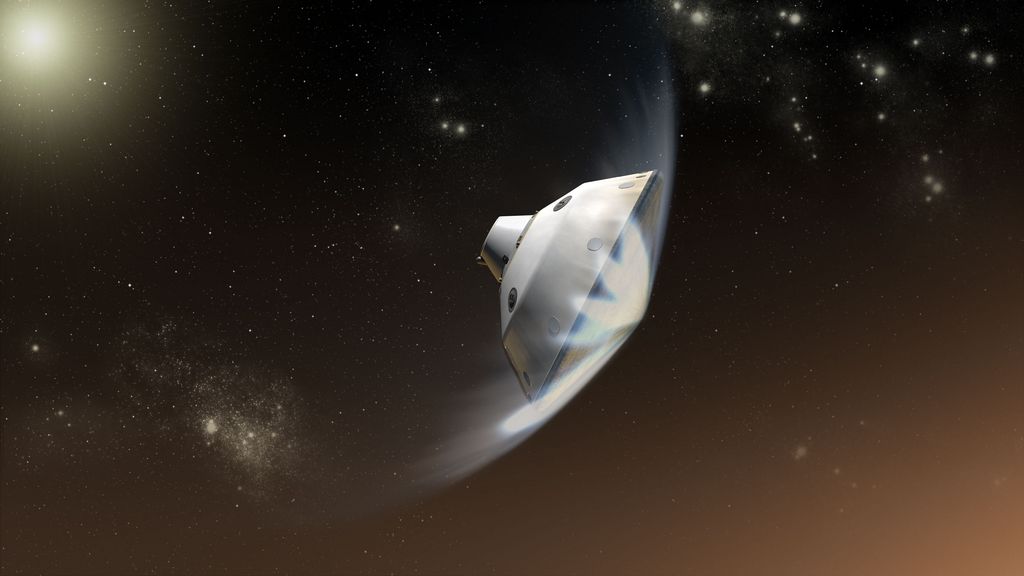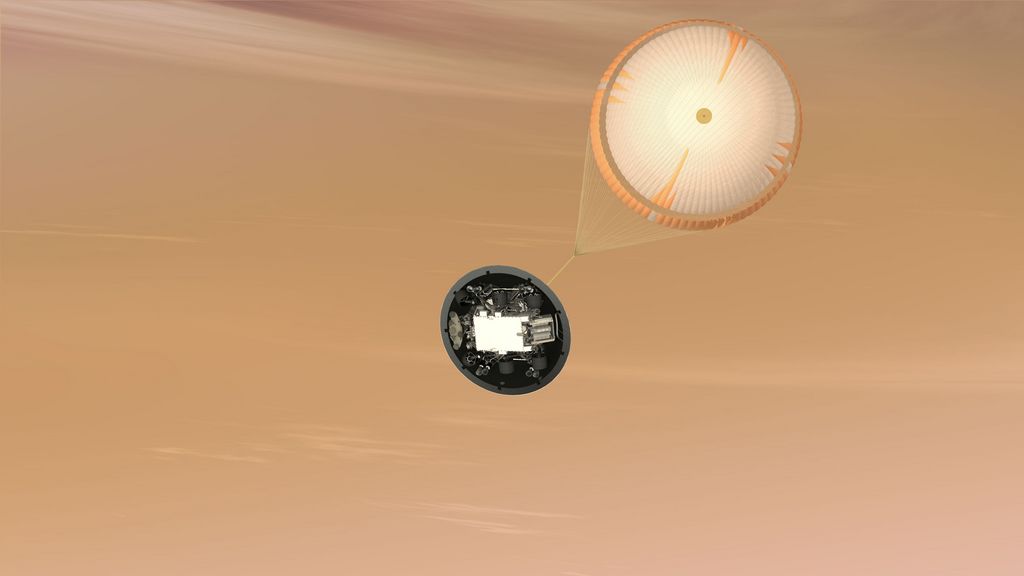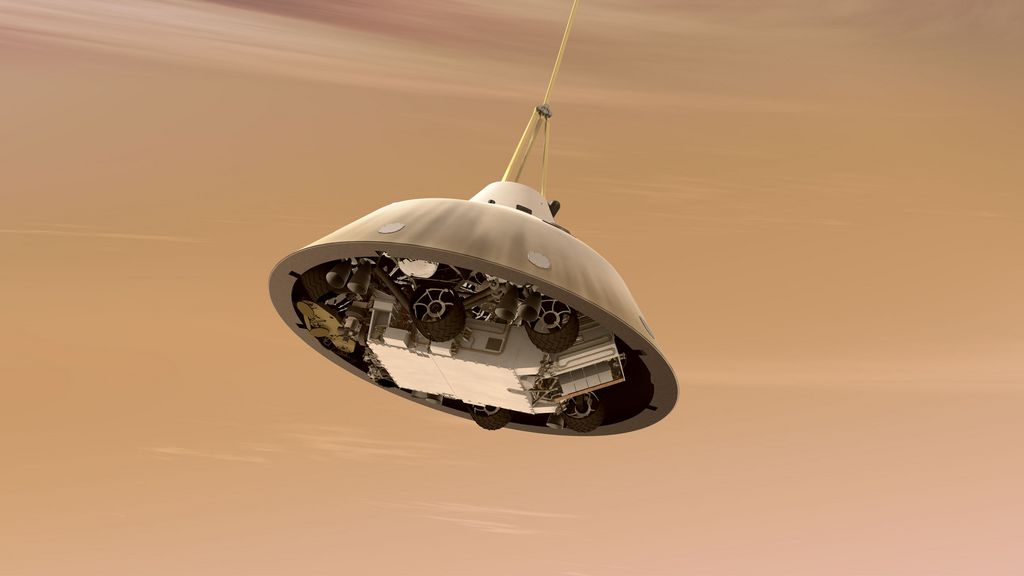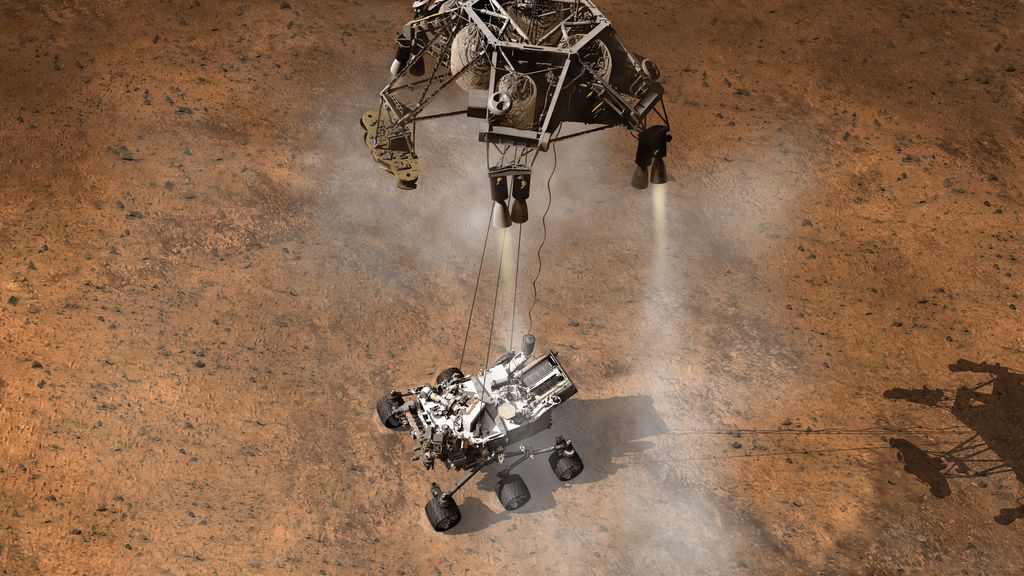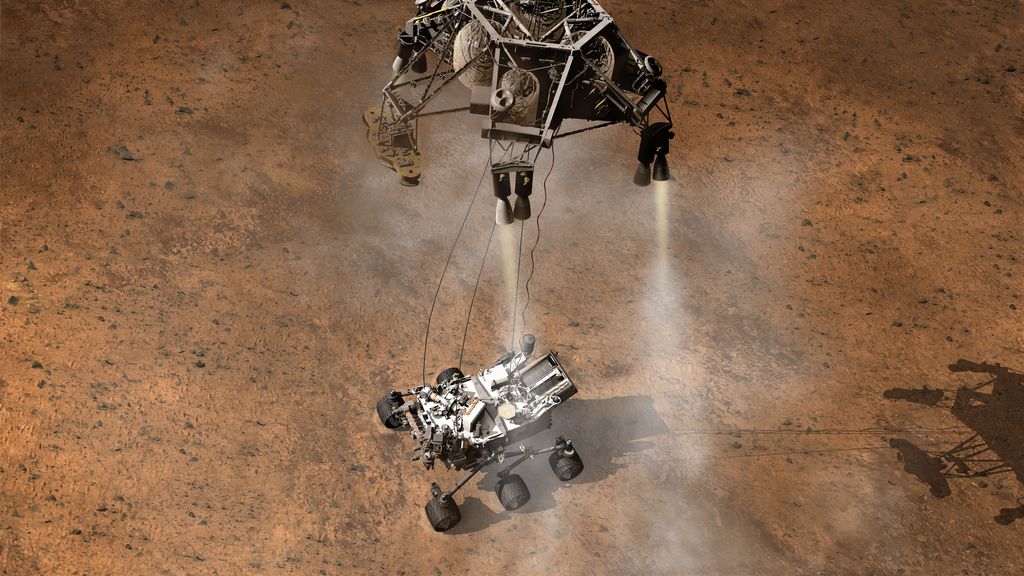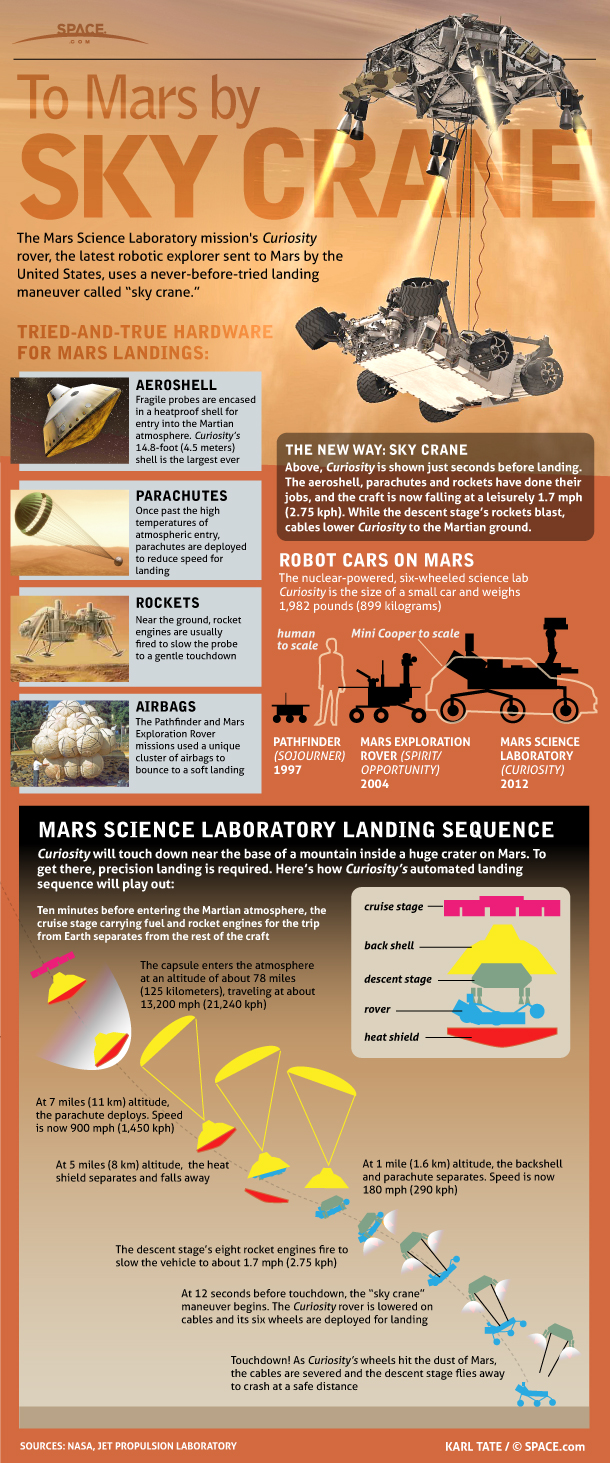How Mars Rover Curiosity's Nail-Biting Landing Works (Pictures)
Curiosity in Cruise
NASA's newest Mars rover is slated to touch down on the Red Planet on the night of Aug. 5, in a nail-biting display that relies on sophisticated mechanics and precision timing.
The Mars Science Laboratory, or Curiosity rover, will attempt to land on the Martian surface after spending more than eight months cruising toward the Red Planet. The rover will land inside Gale Crater, where it will explore a giant mountain at the center, and search for signs that Mars could have supported life.
Here's how Curiosity's landing will work:
As Curiosity approaches Mars, the rover is safely tucked inside the spacecraft's aeroshell. The approach phase begins 45 minutes before the spacecraft penetrates the Martian atmosphere. To help with navigation, Curiosity will enter the atmosphere 2,188 miles (3,522 kilometers) above the center of the planet.
Mars Science Laboratory Aeroshell Capsule
As the spacecraft enters the Martian atmosphere, the rover is protected by the aeroshell, which includes a heat shield (on the right, facing in the direction that the spacecraft is traveling through the atmosphere) and a backshell.
The aeroshell is the largest ever used for a mission to Mars, spanning 14.8 feet (4.5 meters) across.
In this artist's illustration, the Mars Science Laboratory aershell capsule is entering the Martian atmosphere.
Thrusters on the Aeroshell
The spacecraft's entry, descent and landing (EDL) phase begins when it reaches the atmosphere of Mars, roughly 81 miles (131 kilometers) above the surface of the Gale crater landing site, and ends when the rover safely touches down on the planet.
Curiosity's landing will be more accurately coordinated compared to any Mars landings before it, thanks to a highly precise guided entry system.
This artist's concept depicts thrusters on the backshell of the spacecraft's aeroshell firing during the entry, descent and landing phase. Firing these thrusters will help adjust the orientation of the spacecraft during the guided entry maneuvers, NASA officials have said.
Descent and Landing Phase
The Mars Science Laboratory's entry, descent and landing phase will last approximately seven minutes. During this time, the spacecraft decelerates from a velocity of about 13,200 miles per hour (5,900 meters per second) at the top of the atmosphere, to a stationary state once it touches down on the surface of the Red Planet.
In this illustrated scene, the friction of Mars' atmosphere is slowing the spacecraft's descent and heating the heat shield.
Parachute for Landing
The Mars Science Laboratory will use the largest parachute ever built for a planetary mission to land on the Red Planet. The parachute has 80 suspension lines, and is more than 165 feet (50 meters) in length, and measures almost 51 feet (16 meters) across.
The parachute is designed to survive being deployed at Mach 2.2 as the spacecraft travels through the atmosphere of Mars. During this time, it will generate up to 65,000 pounds (almost 29,500 kilograms) of drag force.
The parachute system is attached to the top of the backshell. In this artist's illustration, the heat shield portion of the aeroshell has been jettisoned, and the Curiosity rover can be seen tucked into the backshell. The spacecraft's descent stage is inside the backshell, which drops away so that a radar system on the descent stage can begin determining the spacecraft's altitude and velocity.
Curiosity Inside the Backshell
In this illustrated scene, the Curiosity rover is still tucked inside the backshell of the spacecraft, as a parachute system helps slow its descent to the surface. In this artist's concept, the spacecraft's heat shield has already been jettisoned.
Since the Curiosity rover is too big to use airbags to soften its landing, the spacecraft will use a sky crane to lower it to the surface.
The Descent Stage
The spacecraft's descent stage will provide rocket-powered deceleration to prepare for the rover to touch down on the surface of mars.
The descent stage carries a radar system that will relay information about the spacecraft's altitude and velocity. This artist's concept shows the descent stage of the Mars Science Laboratory during the final minute before the Curiosity rover lands on the Red Planet.
As it nears the surface, shortly after the moment shown here, the descent stage will lower the rover on a bridle and deliver it safely to the surface.
Breaking space news, the latest updates on rocket launches, skywatching events and more!
Rover Using Sky Crane
The 1-ton Curiosity rover is too big for an airbag-assisted landing, so the rover will use a sky crane to touch down on Mars. This landing system will place the rover on its wheels, ready for mission controllers to check its systems and begin the two-year mission.
This illustrated scene shows part of the sky crane maneuver. The spacecraft's descent stage, while controlling its own rate of descent with four of its eight throttle-controllable rocket engines, is lowering Curiosity on a bridle. Three nylon tethers connect the rover to the descent stage, with an umbilical that also provides power and communication connection.
This bridle will extend to about 25 feet (7.5 meters), as the rover descends to the surface. Seconds later, once touchdown has been detected, the bridle will be cut and the descent stage will fly off and crash-land safely away from the rover
Landing Attached to a Bridle
In this scene, Curiosity is touching down on the surface of Mars, attached to a bridle on the spacecraft's descent stage.
Touchdown!
This illustration depicts the moment immediately after the Curiosity rover touches down on the Red Planet. Once the spacecraft registers that the rover has landed, pyrotechnic cutters will sever the cables between the rover and the descent stage.
Then, the rocket-powered descent stage will fly away, and will crash-land on the surface a safe distance away from the rover.
Rover to Land on Mars by Sky Crane (Infographic)
Curiosity, the latest wheeled vehicle to be sent to explore Mars, is the size of a small car and will use a unique method of landing on the Red Planet.
Join our Space Forums to keep talking space on the latest missions, night sky and more! And if you have a news tip, correction or comment, let us know at: community@space.com.

Denise Chow is a former Space.com staff writer who then worked as assistant managing editor at Live Science before moving to NBC News as a science reporter, where she focuses on general science and climate change. She spent two years with Space.com, writing about rocket launches and covering NASA's final three space shuttle missions, before joining the Live Science team in 2013. A Canadian transplant, Denise has a bachelor's degree from the University of Toronto, and a master's degree in journalism from New York University. At NBC News, Denise covers general science and climate change.



